Technological advances continue to produces many changes, not just in our society, but also in the world of business. Besides, many would agree that technology is among the most fascinating yet mysterious things in the world.
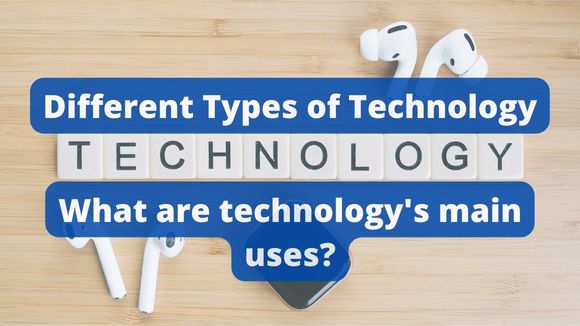
However, how familiar are you with technology? Do you ever wonder if there are different types of technology? Is technology just all about computers? In this post, you will get valuable answers. After all, technology is behind the unstoppable developments in our today’s world.
Table of Contents
What is Technology?
Technology or tech is the use of scientific knowledge to solve practical problems. It is the use of skills, methods, and processes to produce goods or services. It can also be the knowledge of techniques, processes, and crafts. Technology can also be embedded in machines that can be operated without detailed knowledge of their workings.
People started using technology when they first started using resources to make simple tools. The prehistoric discovery of how to control fire increased the available sources of food and improved humanity’s ability to live in colder climates. This led to the domestication of plants and animals, which allowed for agriculture and animal husbandry on a much larger scale than before. The development of agriculture allowed for the resettlement of much of the world’s population, which lead to the rise of civilizations.
Three simple machines have been used for a long time. They are the wheel and axle, lever, and pulley. More complex machines, such as the steam engine and electricity-powered factories, appeared during the Industrial Revolution in the 18th century.
Since then, science has led to the development of newer technologies such as computers, nuclear power, and space exploration. The term “technology” has been used to refer to a wide variety of fields including information technology (IT), medical technology (MT), biotechnology (BT), and many other fields. It is also sometimes used in a more narrow sense to refer to information technology or even computer technology.
The term can also sometimes used more broadly to include all manner of high-tech products and services, such as video games and cell phones. When used in this way, it is often preceded by the adjective “high-tech.”
Technology has been a driving force behind many of the major historical events and trends, such as the Industrial Revolution, the Green Revolution, and the Information Age. It has also been a major source of employment and economic growth, as well as a source of social change. With the advent of new technologies, old jobs are often replaced by new ones, and new industries are created. As technology advances, it can have both positive and negative effects on society. On the one hand, it can lead to increased productivity and improved living standards. On the other hand, it can cause unemployment and environmental pollution.
Technology is not value-neutral; it can be used for bad or good purposes. For example, nuclear power can be used to generate electricity or to make weapons. Similarly, computers can be used for educational purposes or cyber-crime.
It is important to remember that technology is only a tool, and it is the people who use it who ultimately decide how it will be used. Technology has both positive and negative effects on society, and it is up to us to ensure that its benefits outweigh its costs.
What are the Different Types of Technology?
So, let’s find out the 16 different types of technology!
Communication Technology

From personal to professional life, communication is essential in exchanging ideas, sharing information, and expressing emotions. This makes communication technology one of the most common types of technologies used in everyday life. Without this technology, it would be difficult for us to communicate with each other with greater accuracy, in less time, and more convenience.
As technological advancement improved the different ways to communicate, we can access communication even with our fingertips. Transmitting information is now easier with various devices such as the Internet, television, radio, telephone, and mobile devices. Many business owners make use of communication technology to promote products and services, enhance the decision-making process, respond to consumer needs, and facilitate the flow of information and knowledge in workplaces.
A smartphone is a handheld device that combines features of a personal computer with features of a mobile phone. Smartphones are typically pocket-sized, as opposed to laptops or tablets. Smartphones can include features such as advanced operating systems, web browsing, email, digital cameras, and GPS navigation. Many smartphones also have capabilities beyond those of a basic mobile phone, such as the ability to install third-party applications and to use more than one carrier’s network.
Smartphone
Information Technology

These types of technology deal with computing. Basically, things like hardware, software, and telecommunication are necessary to transmit information while making communication possible. It also involves data management of audio, data files, videos, and images.
Businesses take advantage of information technology to enhance customer service and decision-making process and transfer the right information. This technology includes Management Information Systems (MIS) to improve the development, usage, and management of various information technology tools in assisting the employees’ performance.
Adobe Photoshop is a graphics editor developed and published by Adobe Systems for macOS and Windows. Photoshop was created in 1988 by Thomas and John Knoll. Since then, it has become the de facto industry standard in raster graphics editing, such that the word “photoshop” has become a verb as in “to Photoshop an image,” “photo shopping.”
Adobe Photoshop
Entertainment Technology
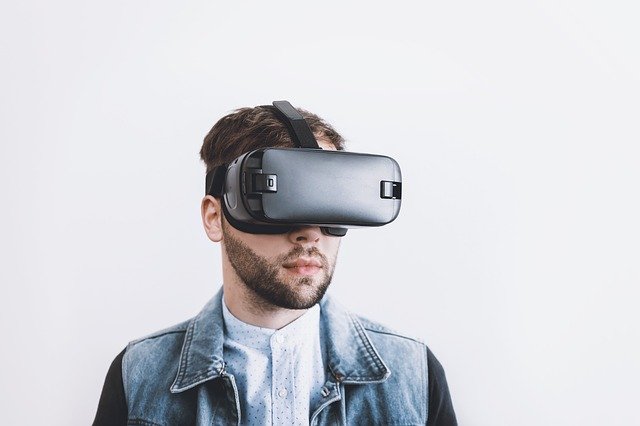
It traditionally appeared from theatrical stagecraft; entertainment technology deals with creating or manufacturing something to improve our overall entertainment experience. Modern technology is used by the entertainment industry to compose and produce songs, create video games, shoot movies, and more to keep us entertained.
No doubt, the entertainment industry is too broad, and each of us requires a unique way to get entertained. In fact, it includes automation, animatronics, sounds, videos, scenery fabrication, computer simulations, light field devices, augmented reality, interactive environment, and more.
Virtual Reality is a computer technology that creates the feeling that you are in a different place. It is often used for gaming, but it can also be used for other purposes such as education and training.
Augmented Reality is a technology that allows you to see real-world objects with computer-generated images superimposed on them. It is often used for gaming, but it can also have other practical applications such as in education and training, or in industry and construction.
Virtual Reality & Augmented Reality
Medical Technology
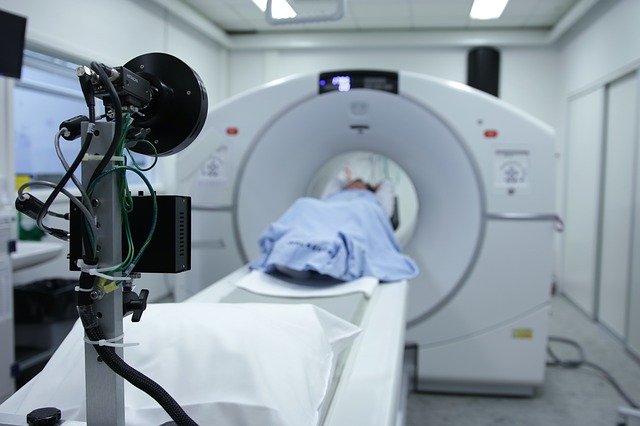
Medical technology is usually used in clinics and hospitals and is heavily influenced by innovation. It is created to various health conditions and to improve and extend life. This type of technology helps in sustaining health by speeding up the recovery process as well as reducing the pain.
Biotechnology and pharmaceuticals utilize medical technology to take advantage of the best medical equipment that is necessary for research, diagnoses, infections, and disease treatment. This technology already made an incredible impact on the field of medicine, from ankle braces to MRI machine innovations. Most developing countries invest and adapt the modern medical technology to enhance their healthcare systems.
One of the most amazing pieces of medical equipment is the MRI machine. This machine can provide doctors with vital information about the human body, and it has saved countless lives. The MRI machine uses magnets and radio waves to create images of the inside of the body. These images can be used to diagnose problems, identify cancers, and locate tumors. In addition, MRI machines can be used to evaluate the health of organs and bones. MRI machines are an essential piece of medical equipment, and they have revolutionized the field of medicine.
MRI Machine
Business Technology

The world of business becomes more technological since technology improves the business management process and makes transactions faster, more convenient, and more efficient. Business technology is changing many areas like sales and promotions, logistics, data collection, accounting data, among others.
This type of technology deals with the application of science, data, engineering, and information to achieve both the economic and organizational goals. It assists in achieving proper and systematic business operations and functions. Many small business owners utilize this technology to generate new leads and to compete with establishes businesses through innovative methods.
An enterprise resource planning (ERP) system is a business software solution that helps organizations manage their core operations. It includes a wide range of applications that can cover everything from accounting and finance to supply chain management and manufacturing. ERP systems are designed to provide a holistic view of an organization’s entire business, making it easier to streamline processes and make informed decisions.
ERM System
Educational Technology
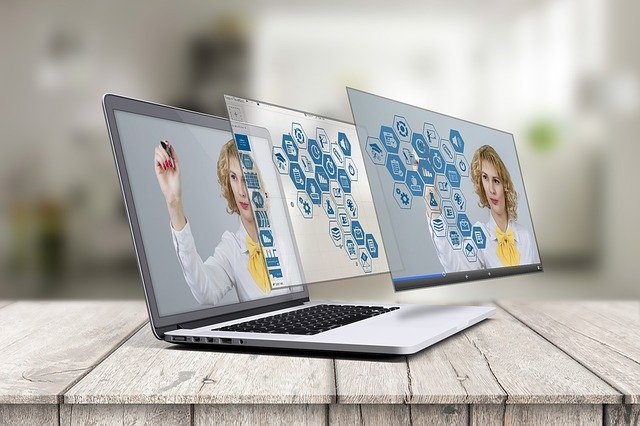
Education technology aims at enhancing the performance of learners by establishing various technological processes and resources in the learning environment. With the advancements of technology in the academic discipline aspect, the students are geared to achieve deeper understanding and knowledge of certain subjects.
When learners utilize this type of technology, they can easily formulate solutions to problems. While it improves the methods of learning, the students develop motivation and encourage individual learning and continue their discoveries. Besides, this technology provides them easier access to different educational materials and gamification to learn new subjects.
In a traditional classroom setting, students are confined to a single physical space where they learn from a teacher who is also physically present. However, in a virtual classroom, students and teachers are connected online, giving them the flexibility to attend class from anywhere in the world. It opens up possibilities for collaborations with classmates who might be located in different parts of the world.
Virtual Classroom
Product Technology

Product technology deals with an innovative process to create certain products for the market, which includes the manufacturing process. This technology helps manufacturers needed manpower, materials, and manpower. E-commerce apps, banking apps, slot machines, among others, fall under this type of technology.
As product technology involves the understanding of characteristics and specifications of a product or service, the manufacturers can create them according to the needs of the consumers. This technology assists in determining the product’s functional structure, properties, and characteristics to meet the unique needs and requirements of the buyers.
The PayPal app is a convenient way to send and receive money. With just a few taps, you can easily transfer money to your friends and family. The app also makes it easy to shop online, as you can simply link your PayPal account to your favorite retailers. Plus, with the added security of PayPal’s fraud protection, you can shop with confidence knowing that your information is safe. Whether you’re paying for lunch or buying a new pair of shoes, PayPal is an easy way to send and receive money.
PayPal
Architecture Technology
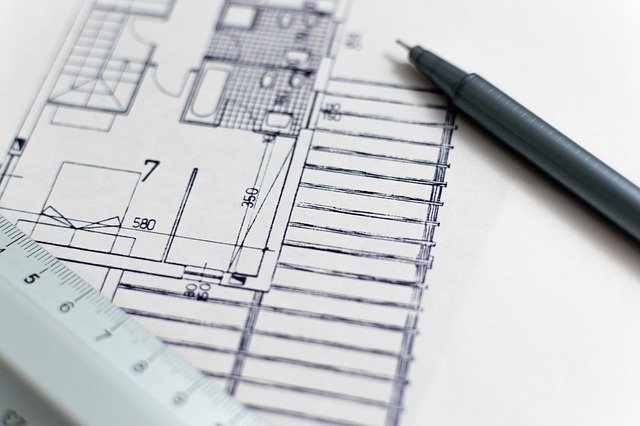
Architecture technology is consists of different industries like real estate, residential contract, construction, building engineering, and material manufacturing. It deals with the applications of the science behind the construction and of designing buildings.
This technology assists with different elements of buildings, which include smart elevators and windows. New construction methods, together with new materials and technologies, eliminates the challenges in industrialization.
Have you ever wondered how tall buildings stay up? Or how heavy objects are able to move between floors? The answer to both of these questions is the elevator. Elevators are lifting devices that use a system of pulleys and cables to move people or things between floors. They are a vital part of tall buildings, as they provide a quick and easy way to move between floors.
Elevator
Construction Technology

This type of technology includes engineering structures such as bridges and equipment like tractors that are used for land preparation. This will also include computer software necessary for designing and creating the building’s virtual structure. Meaning, it is related to the methods and equipment used to build basic and advanced structures and buildings.
Construction technology offers construction tools that can enhance the operational efficiency within the given deadline and specified budget. These tools also assist in ensuring the builders can complete certain projects with no accidents and issues.
Graphene is a two-dimensional material that has received a great deal of attention for its unique properties. Now, researchers have found a way to produce three-dimensional graphene, which could be used in a variety of applications. The new material is made by stacking layers of graphene on top of each other and then applying pressure.
This process results in a three-dimensional structure with hierarchical porosity. The resulting material is extremely strong yet lightweight, and it has a large surface area that makes it ideal for use in batteries and catalysts. In addition, the material is highly conductive, making it potential for use in electronics. The development of three-dimensional graphene represents an important advance in the fields of materials science and nanotechnology.
3D graphene
Agriculture Technology

Since ancient times, agriculture has been playing an integral role in human’s life. Before the introduction of modern technology, people used to do everything by sowing, plowing, and harvesting by themselves. As agriculture technology came into the scene, people utilize information technologies, devices, machines, and sensors. These technologies allow many businesses to become safe, more environment-friendly, more efficient, and more profitable.
Agriculture technology has introduced pieces of machinery for farming stages and other agricultural processes such as the feeding of livestock, sorting of products, harvesting of crops, land irrigation, soil tilling, and seed plantation. This technology includes machinery that performs the jobs which were performed formerly by animals and humans.
Drones have become an increasingly important tool in agriculture. They can be used to survey crops, identify problems, and prescribe solutions. In addition, drones can be used to spread fertilizer and pesticides evenly across a field, which helps to improve crop yield.
Drones are also being used to monitor the health of livestock. By tracking the heart rate and respiration of animals, drones can help farmers to ensure that their herds are healthy. The use of drones in agriculture is revolutionizing the way that crops and livestock are managed.
Drone
Operation Technology
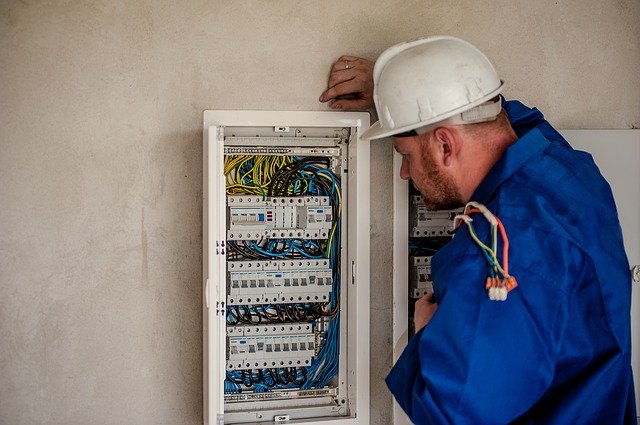
Operation technology (OT) involves the use of hardware and software to monitor and control the performance of physical devices. This technology is a result of long phases of experimentation and observation to achieve a productive process. This can include everything from industrial machinery to transportation systems to traffic lights.
This type of technology was used in industrial control systems for manufacturing, transportation, and utilities. OT is often used in mission-critical situations where real-time data and control are essential, such as in factories, power plants, and hospitals. Unlike information technology (IT), which focuses on computers and networks, OT is designed specifically for industrial applications. As a result, OT systems are often more complex and specialized than IT systems.
One of the biggest challenges facing OT is the increasing use of Internet-connected devices, which can create security risks if not properly managed.
Assistive Technology

Assistive technology works for individuals with disabilities. Software programs, devices, and equipment are used to modify, maintain, or enhance the functional capabilities of disabled individuals. This type of technology assists people who have difficulty in learning, walking, pointing, hearing, seeing, remembering, writing, speaking, among others.
Many schools use various assistive technology to assist autistic students in understanding and gain new knowledge more effectively. Overall, this technology made it easier and possible for people with disabilities to perform tasks that they fail to accomplish before.
A magnifier is a simple tool that can be used to enlarge objects. It consists of a lens that is placed between the object and the eye. The lens captures more light than the human eye can, and this results in a magnified image.
Magnifiers are often used to examine small objects, such as coins or insects. They can also be used to read the fine print, such as the print on a medicine bottle. In addition, magnifiers are sometimes used as a low-power telescopes.
Magnifier
Artificial Intelligence

The principle behind artificial intelligence is to create software, machines, or computers that can think the way we do. This technology utilizes the way our brain thinks, learns, acts, and even makes decisions. Mathematics, engineering, linguistics, computer science, physics, biology, and psychology contribute to this type of technology.
Speech recognition, learning, planning, and problem-solving are some of the artificial intelligence samples. This technology requires access to relations, objects, categories, and properties to implement knowledge engineering.
OpenAI is a research company that is devoted to artificial intelligence (AI) responsibly. To achieve this, they work on many projects related to machine learning and artificial intelligence. OpenAI also has a team of people who are constantly researching new ways to improve their technology.
One of their machine learning projects includes developing a bot that can beat a professional human player at the game Dota 2. This was accomplished by creating a neural network that was trained on millions of hours of gameplay. The bot was able to defeat the world champion of Dota 2, which showed the potential of artificial intelligence. OpenAI is constantly striving to find new ways to improve its technology so that it can be used in a responsible way.
OpenAI
Space Technology
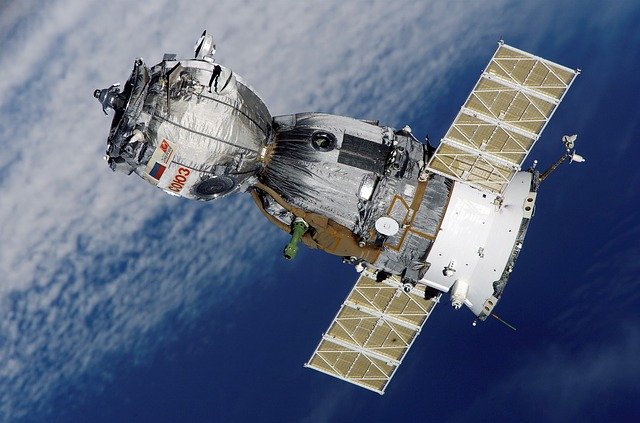
Being the sub-part of the aerospace industry, space technology is utilized in space satellites, flights, and explorations. It consists of space crafts, space stations, support infrastructure, procedures, equipment, and satellites. While it is an important part of our lives, this technology is used in various areas like GPS systems, satellite telecast, weather forecasting, and remote sensing.
Astronomy and earth science are other sciences that benefit from this type of technology. Space technology is utilized to explore or commercialize space like spacecraft and communication satellites.
The James Webb Space Telescope (JWST) is a space telescope designed primarily to conduct infrared astronomy. It will be the largest and most powerful telescope ever put into orbit, and it is scheduled to launch on December 25, 2021.
The JWST will be able to observe the universe in unprecedented detail, providing new insights into the formation and evolution of galaxies, stars, and planets. In addition, the JWST will be able to study exoplanets in greater detail than any previous mission, potentially answering some of the most fundamental questions about our place in the cosmos.
James Webb Space Telescope
Robotics Technology
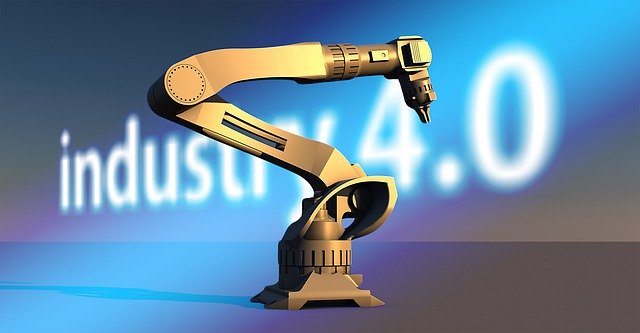
Robotics technology deals with maintaining, building, and designing robots. These robots work with the help of artificial intelligence technology. Robotic technicians are responsible for maintaining and handling robots, while robotic engineers design and build them. Robots that are smart and highly developed can perform a number of tasks to reduce human work.
This technology utilizes various computer systems to ensure processing, controlling, and sensory feedback of information. It is primarily used to build machines to be substituted for humans or replicate their actions. Every robot requires intelligence to perform different tasks such as object manipulation and navigation, motion planning, mapping, as well as localization. Automobile manufacturers utilize this technology to perform simple, repetitive tasks, and other industries that involve hazardous situations and environments for humans.
As anyone with a busy lifestyle knows, one of the most challenging aspects of keeping a tidy home is finding the time to vacuum. With a robot vacuum, however, this task can be easily automated. Simply schedule the vacuum to clean at a time that is convenient for you, and let it do its job.
Most robot vacuums are equipped with sensors that allow them to navigate around furniture and other obstacles, and some even include features such as edge-cleaning and self-emptying dustbins. In addition, many robot vacuums now come with remote controls and smartphone apps, making it easy to start or stop the vacuum from anywhere in your home.
Robot Vacuum
Superintelligence
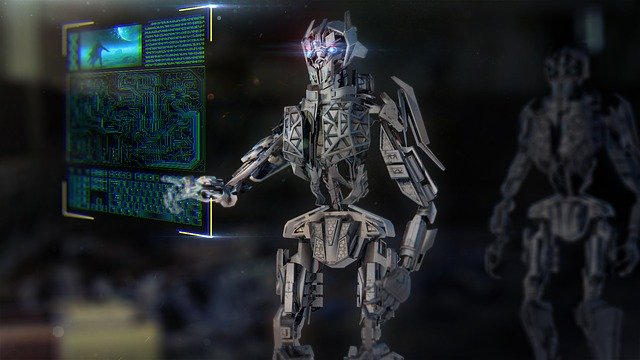
This technology involves intelligence. They can surpass even the most gifted or smartest minds of humans. It also refers to the problem-solving systems such as super-intelligent language and engineering assistants. It can be connected to the singularity concept, indicating that a certain catalyst or trigger may cause drastic changes that are way beyond our anticipations.
Superintelligence plays an integral part in many discussions in terms of artificial intelligence ethics, which is necessary to protect its development as well as humans from liabilities in running any artificial intelligence models. While it is still under progress, more interactive interfaces and systems allow humans to approach the virtual communication models.
Examples of Evolution of Technology
Information technology
The evolution of technology has also greatly impacted the way in which we take notes and write papers. The traditional pen-and-paper approach has been largely replaced by the use of computers and printers.
Computers have made it easy to type up papers, save them in electronic format, and print them out with a few clicks of the mouse. Printers have likewise evolved over the years. They are now able to print in color, and many printers include scanning and copying functions as well.
This shift to computer-based note-taking and writing has had a major impact on the education system. Students are now able to take notes electronically, complete assignments, and submit papers electronically. This has made the process of completing schoolwork much easier and faster than ever before.
Entertainment industry
The earliest commercial arcade video game, Pong, was released in 1972. Since then, there have been countless advances in graphics, gameplay, and storytelling in video games. As the technology behind video games has evolved, so too has the business model for making and selling them.
The video game industry has come a long way since the early days of arcade games and home consoles. The industry is now worth billions of dollars, with some games generating more revenue than Hollywood blockbusters.
Nowadays, games’ graphics and capabilities are only limited by the imaginations of their creators. With the power of current-generation consoles and PCs, games can be truly immersive experiences, with photo-realistic graphics and realistic physics.
Communication technology
The evolution of communication technology has been nothing short of astounding. Beginning with the advent of the cellphone, we have now reached a point where smartphones are capable of doing everything from surfing the web to controlling home appliances.
Cellphones were first introduced in the early 1980s. They were large, clunky devices that were used mainly for making phone calls. Over the years, they became smaller and more advanced, eventually morphing into smartphones.
Smartphones are essentially mini-computers that can be used for a variety of purposes, including making phone calls, browsing the internet, sending text messages, and taking pictures. They are also equipped with GPS receivers, which allow them to track your location.
The first smartphones hit the market in 2007, and they have since become ubiquitous around the world. Thanks to their advanced features and growing app selection, smartphones are quickly replacing traditional cellphones as the communication device of choice.
Main Use of Technology?
It is hard to overestimate how much human life has changed due to technology. In the past, traveling from one place to another used to take weeks or even months. Now, we can get from one side of the world to the other in just a few hours.
Similarly, communicating with someone used to be a very slow process, but now we can instantly connect with anyone, no matter where they are. Technology has also had a huge impact on education and business.
In the past, people had to go to libraries to do research or communicate with others in their field. Now, we can access all the information we need with just a few clicks of a button.
And businesses can now operate on a global scale, thanks to advances in communication and transportation. Technology has made our lives much easier and more convenient.
We often think of technology as being the latest gadgets or gizmos, but in reality, anything that is man-made and serves a purpose can be considered technology. Even everyday items like door locks, floor panels, and furniture are technologies that we now take for granted.
But while these items may seem less impressive than self-driving cars or 3D printing, they play an important role in our lives. Door locks help to keep us safe and secure, floor panels provide a sturdy surface to walk on, and furniture helps to make our homes more comfortable. Technologies make our lives easier and more efficient in a variety of ways.
Technological advances have drastically changed the workplace over the past few decades. The widespread adoption of tools like the internet and email has transformed communication, while word processing, spreadsheets, and presentations have boosted office productivity.
Electronic databases have made record keeping easier and more efficient, and robots and artificial intelligence are increasingly being used for automation. These changes have had a major impact on the way businesses operate and the skills that employees need to succeed.
As technology continues to evolve, even more changes are likely on the horizon for the workplace.
Why Should I Use the Latest Technology?
It’s hard to deny the appeal of new technology. After all, who doesn’t want the latest and greatest gadgets? But there’s more to it than just that. With each new generation of products, we’re allowed to do things that weren’t possible before.
We can stay connected to friends and family no matter where they are in the world, we can access information instantaneously, and we can even control our homes with the push of a button.
New technology also brings new industries and jobs, giving us the chance to be a part of something exciting and innovative.
As someone who loves gaming, I’m always on the lookout for ways to improve your experience and get ahead of the competition. That’s why I always buy the latest laptop model, and next-generation console, and upgrade the PC’s specs.
With the latest tech, you’ll have access to higher frame rates, better graphics, and smoother gameplay. You’ll also be able to take advantage of new features and updates that can give you an edge over other gamers.
When you weigh all of these factors, it’s easy to see why adopting new technology is so important – not just for businesses, but for individuals as well.
Why You Shouldn’t Use the Latest Technology?
Despite all of the goods technology brings to the table, there are a few potential drawbacks that might make you think twice about upgrading your devices. Here are a couple of things to consider:
- The high cost of new technology can be prohibitive for many people. When the latest iPhone comes out, for example, you can expect to pay upwards of $1,000 for the newest model. If you’re not careful, you can easily spend more money than you have on gadgets and upgrades.
- New technology can also be unreliable. Remember when the first generation of smartwatches came out? They were buggy and often didn’t work as advertised. It’s not uncommon for new products to have teething problems that need to be ironed out before they’re ready for prime time.
- Additionally, new technology can be difficult to learn and use. If you’re not comfortable with change, or you don’t like having to learn new things, then upgrading to the latest devices might not be for you.
- Finally, there’s always the risk that your new gadget will become obsolete in a few years. As technology improves at an exponential rate, the devices we use today will eventually be replaced by something better. That means you’ll have to upgrade again (and spend more money) down the line.
So, those are a few things to consider before making the jump to the latest and greatest technology. As with anything else in life, there are pros and cons to upgrading your devices.
Final Thoughts
It is no secret that technology has changed the world. We can communicate with people across the globe in an instant, travel to far-off places with ease, and access an unimaginable amount of information at the click of a button. However, as our dependence on technology grows, it is important to consider the potential downside of this trend.
While technology can be utilized for a whole lot of good, it can also destroy our world. It can completely influence the way we live today. Besides, we enjoy the comfort and convenience it offers. As our world becomes more and more connected, we must be careful not to lose sight of what truly matters.
With the above ideas, do you find technology really fascinating?

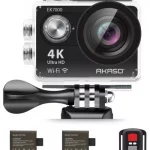

Fueling progress with technology’s breadth.keep it up.